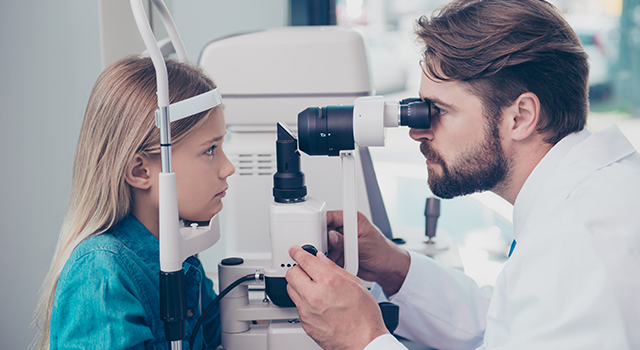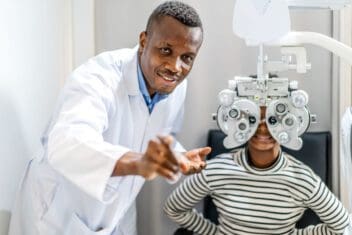The Comprehensive Eye Exam: What to Anticipate Throughout Your Visit to the Eye Physician
A visit to the eye medical professional for a detailed eye examination is more than a regular exam; it is a critical action in guarding your visual health. What precisely happens throughout the eye health analysis, and exactly how does it affect the prescription process?
First Examination
The initial assessment throughout an eye test serves as an essential foundation for comprehending a person's aesthetic health demands. This stage establishes the tone for the entire exam process, permitting the eye doctor to gather essential details about the individual's case history, lifestyle, and certain vision issues. By carefully assessing any pre-existing problems, medications, or previous surgical treatments, the eye care specialist can tailor the examination to attend to specific requirements successfully.

Moreover, the first appointment is a chance for clients to articulate any questions or issues, promoting a collaborative relationship with their doctor. This interaction not only guarantees that the individual feels educated and comfortable but likewise equips them to participate actively in their eye wellness administration. Jointly, these discussions make it possible for the eye doctor to develop a personalized evaluation plan, guaranteeing ideal care and accurate diagnosis.
Visual Skill Test
Kicking off the core components of an eye examination, the aesthetic acuity examination is developed to assess the sharpness and quality of a person's vision. This critical examination assists determine how well a person can recognize letters or symbols at a standardized distance, normally making use of a Snellen graph (Eye Doctor Optometrist). The graph makes up rows of letters that reduce in dimension from leading to bottom, with the individual positioned at a traditional distance of 20 feet
During the test, the patient is asked to cover one eye and review aloud the tiniest line of letters they can see plainly. This procedure is repeated for the various other eye. The results are taped as a fraction, with 20/20 vision indicating normal visual acuity-- where the individual can see at 20 feet what an individual with typical vision can see at that distance.
The aesthetic skill examination also determines possible refractive mistakes such as hyperopia, myopia, or astigmatism, which could demand rehabilitative lenses. By establishing a baseline of aesthetic efficiency, the test is an essential analysis device that helps the eye care specialist in creating an ideal therapy plan customized to the individual's distinct aesthetic demands.
Eye Health And Wellness Analysis
Complying with the aesthetic skill examination, a comprehensive eye health and wellness assessment is conducted to make sure the general well-being of the eyes. This critical section of the eye exam includes a comprehensive analysis of both the internal and external structures of the eye. The eye doctor or optometrist starts by analyzing the eyelids, cornea, conjunctiva, and sclera for any type of indications of infection, swelling, or problems. Using customized tools like a slit lamp, the specialist acquires a magnified sight of the eye's anatomy, making it possible for in-depth evaluation.
Following, focus changes to the inner frameworks. With making use of ophthalmoscopy or fundus photography, the retina, optic nerve, and blood vessels are diligently examined. This action is important for identifying problems such as retinal detachment, glaucoma, or diabetic retinopathy. Oftentimes, pupil extension is executed to boost exposure of the inner eye frameworks, although this might lead to short-term light level of sensitivity for the client.
In addition, intraocular stress is gauged to evaluate for glaucoma danger. This is additional info usually done making use of tonometry, which can discover raised pressure degrees that might recommend prospective damages to the optic nerve. Jointly, these assessments form an extensive evaluation to preserve ocular wellness.
Refraction and Prescription
Just how does one make certain optimum vision? A vital step hinges on the procedure of refraction and pop over to this site getting an exact prescription. Refraction is an advanced treatment carried out by eye treatment specialists to figure out the exact lens power needed to fix refractive mistakes such as nearsightedness, presbyopia, hyperopia, and astigmatism. The objective of this treatment is to analyze just how light bends as it passes via the eye, allowing the practitioner to identify whether rehabilitative lenses are essential for enhanced aesthetic acuity.
Throughout the refraction process, the client is asked to check out a phoropter, a gadget that includes different lenses. The practitioner will methodically transform these lenses and ask the person to contrast clarity in between options till the very best feasible vision is achieved. This procedure is critical in crafting an accurate prescription that defines the appropriate lens power for spectacles or get in touch with lenses.
The prescription stemmed from this treatment not just maximizes vision however also acts as a foundation for picking appropriate restorative eyeglasses. It is vital to guarantee that prescriptions are regularly updated, as modifications in vision can happen with time, stressing the significance of routine eye assessments. This careful interest to detail assists keep clear, comfortable vision in life.
Follow-Up Referrals

Throughout a follow-up browse through, the eye doctor will certainly carry out a collection of tests to review aesthetic skill and check for any type of changes in vision that may require an upgrade to the prescription. Furthermore, the follow-up supplies a possibility to go over any type of discomfort or problems experienced with existing eyewear. Changes can be made to guarantee convenience and efficacy, whether via lens modification or frame adjustments.
For people with ongoing conditions such as glaucoma, diabetes-related eye issues, or macular degeneration, more constant follow-ups may be needed. These consultations are vital for taking care of and potentially slowing the development of eye illness. Sticking to these suggestions can substantially contribute to keeping aesthetic health and wellness and protecting against long-lasting complications.
Final Thought
The detailed eye test is a vital procedure for maintaining visual health, encompassing an in-depth evaluation of medical history and vision worries. Secret parts include the visual acuity test, which evaluates vision clarity, and the eye wellness evaluation, which takes a look at the general condition of the eyes.
A check out to the eye doctor for a detailed eye test is even more than a routine check-up; it is a critical step in securing your aesthetic wellness.Kicking off the core components of an eye evaluation, the visual acuity test is designed to assess the sharpness and clarity of a client's vision.Adhering to the aesthetic skill test, a comprehensive eye health evaluation is carried out to guarantee the total wellness of the eyes. These gos to allow the eye care expert to keep track of modifications in vision, upgrade prescriptions, and assess the overall health of the eyes. Secret elements include the aesthetic acuity examination, which assesses eyesight clearness, and the eye wellness analysis, which examines the total condition of the eyes.